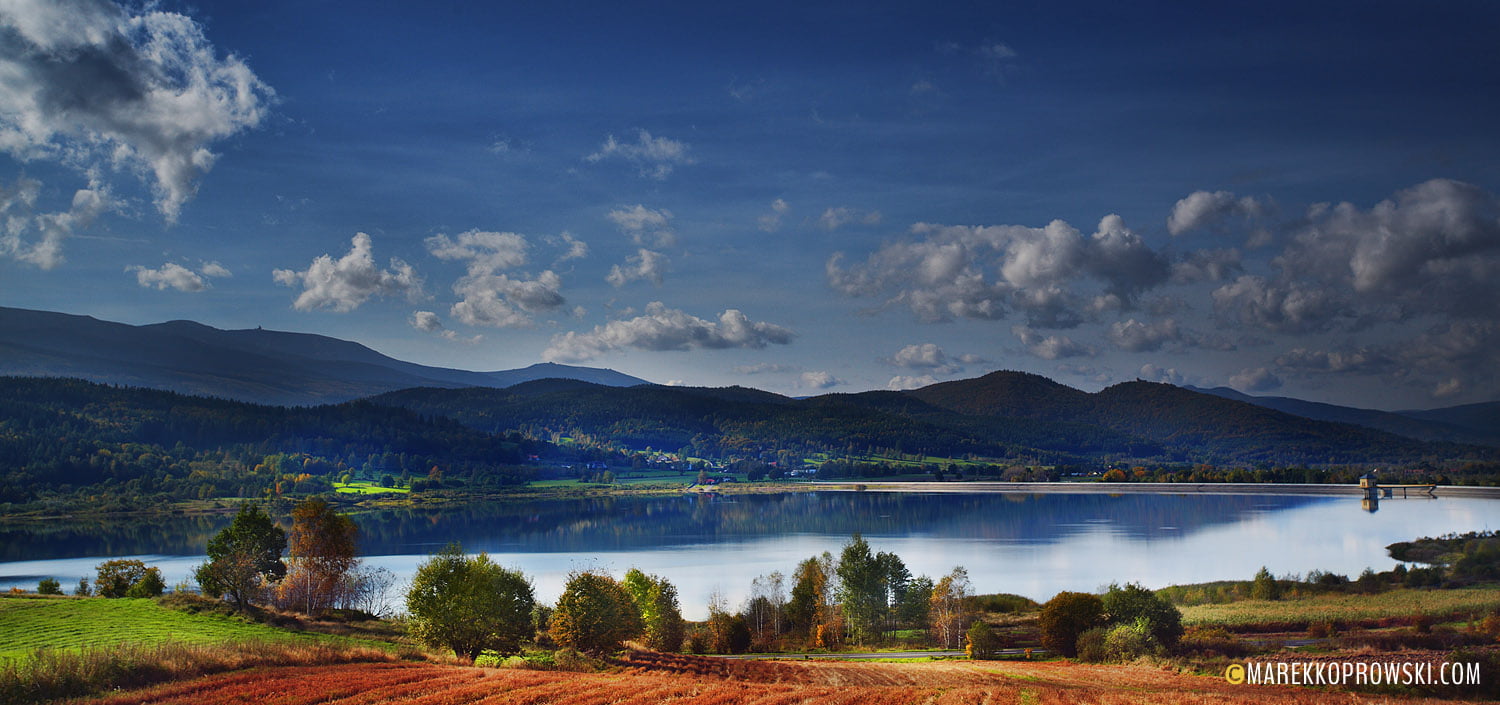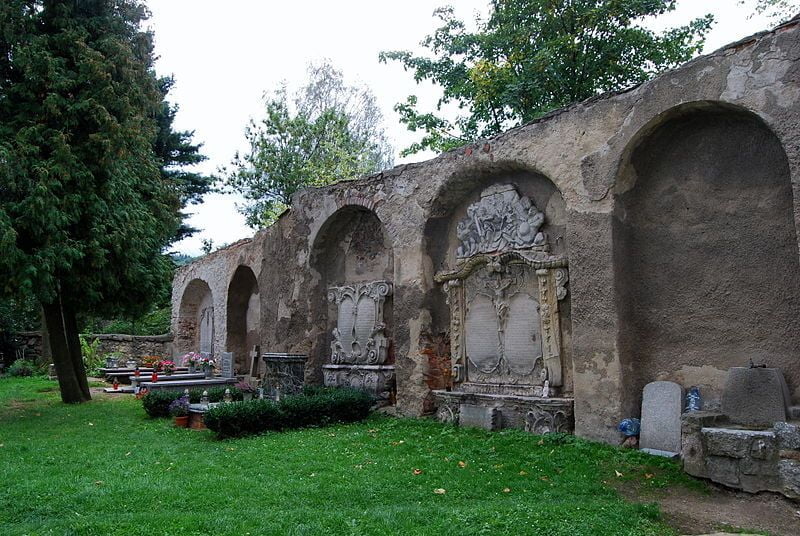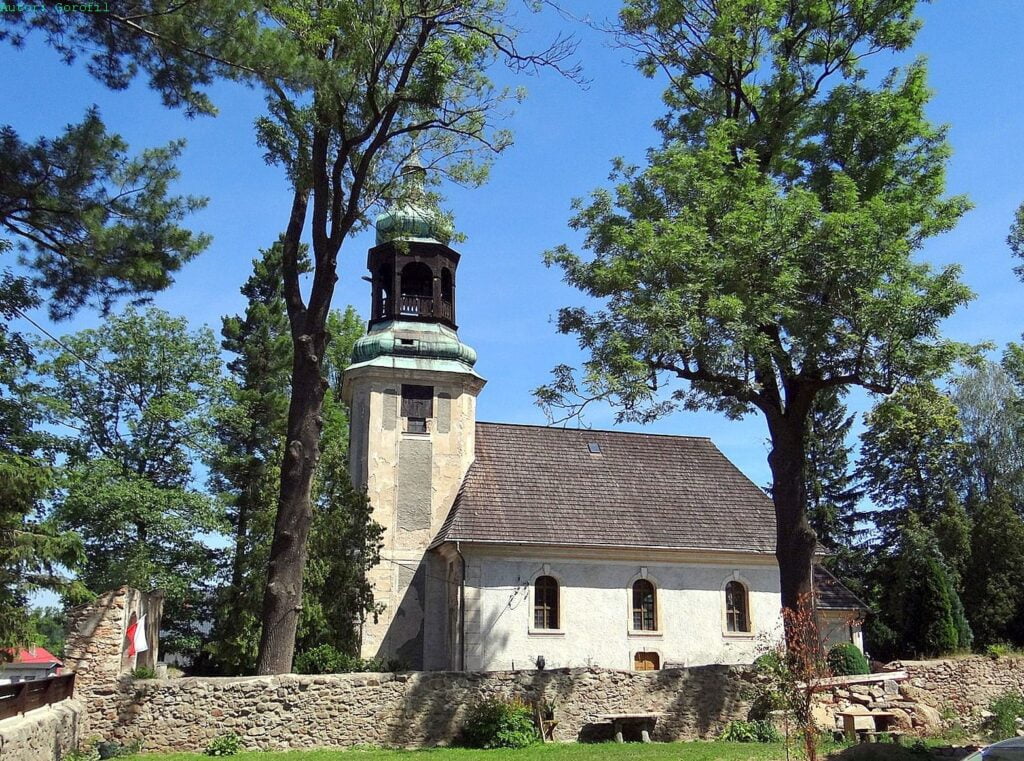St. Martin's Church in Sosnówka is a cemetery church, built before 1318. The current late-Baroque sculpture of the building was built only in 1796. St. Martin's Church is a single-nave building with an impressive tower from the west. Particularly noteworthy for visitors is the three-sided presbytery, entirely covered with a barrel vault with lunettes. Inside there is a classicist pulpit and a number of baroque epitaphs and the recently renovated altar of St. Anna Samotrzecia, which dates back to the second half of the 18th century and is currently a class 0 monument.
St. Martin's Church - a place that delighted the American filmmaker
Sosnówka it has been captivating tourists with its undoubted charm for years. One of the people who fell under this spell was Ian Hickinbotham. He co-created such productions as "The Shining" by Stanley Kubrick, "Raiders of the Lost Ark" by Steven Spielberg, and "Gladiator" by Ridley Scott. How did a famous filmmaker, working on sets all over the world, fall in love with the Polish Karkonosze Mountains?
Events Karpacz and the surrounding area?

While filming the film "Proof of Life" in Poland, Ian Hickinbotham met a Polish woman on the set - Aneta Cebula. Although they worked mainly on foreign productions, they decided to live together in Poland and after seeing several dozen houses, in 2002 they chose the completely destroyed Sonenland villa in Sosnówka. Ian Hickinbotham fell in love with Lower Silesia in 1984, when he appeared on the set of the film "The Winds of War". Then he visited our country several times and finally settled in the Polish Karkonosze Mountains.
The villa where the couple decided to live was designed by Wilhelm Kiehnel at the beginning of the 20th century. A pair of filmmakers wanted to restore it to its former glory. They did some of the work themselves, reconstructing individual elements from stone and wood. Interestingly, the kitchen of the house was designed by Leslie Tomkins himself, the screenwriter of "The Shining" by Stanley Kubrick, with whom the couple collaborated on the set of "Troy". In the kitchen there was a table that "played" "Troy" and candlesticks from the set of "Gladiator" and "The Legend of Zorro". In turn, there was a painting on the wall that was part of the set design for the film "Incognito".
Unfortunately, during the renovation, Ian Hickinbotham was diagnosed with cancer. Despite promising prognosis, the filmmaker died in 2006, at the age of only 53. He was buried in his beloved Sosnówka. The mourning family asked that instead of flowers, donations be made during the funeral to renovate the altar of St. Anna Samotrzecia in the Church of St. Marcin. Steven Spielberg himself joined the collection and donated the largest donation of $10,000 for this purpose. Thanks to the collection, it was possible to renovate the historic altar, and the famous filmmaker will remain in the memory of the inhabitants of Sosnówka forever.

Monument to soldiers killed in World War I
In the church cemetery, there is a modest monument covered with moss in honor of soldiers who died in World War I. The monument presents a helmet with an oak leaf, which symbolizes wisdom and masculinity.
The monument was erected in the second half of the 1920s, on the initiative of local residents and parish representatives. The construction was also supported legally and organizationally by the local authorities. In this way, everyone wanted to commemorate the soldiers who died while fighting on the front and all those missing after World War I, who were formally included among the fallen.
Monument at the Church of St. Martin in Sosnówka, was called Kriegerdankmal, which meant "monument to the fallen". Its construction significantly strengthened social bonds and created a specific ritual of local cultural identity. Each town had its own fallen and its own difficult history. Family, neighbors and friends met at the monument to heal post-war wounds and seek comfort from those who experienced similar emotions. Unfortunately, monuments from the 1920s often fell into oblivion after World War II, so it is even more worth paying them due respect today.
